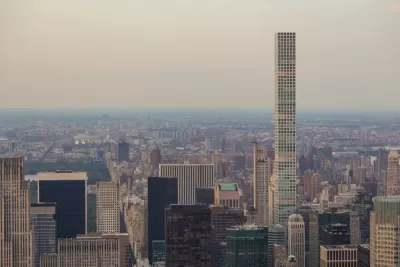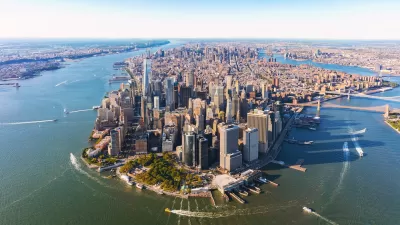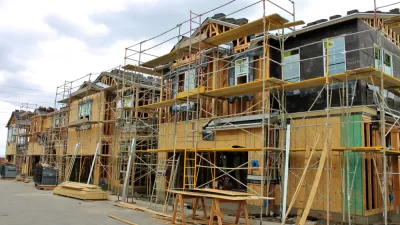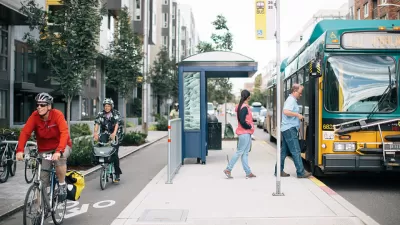As cities build upwards in an effort to create more housing and increase walkability, research shows that tall buildings intensify heat and contribute to increased carbon emissions.

"A report by the United Nations’ Intergovernmental Panel on Climate Change released on Monday looked at the relationship between housing, building structures, and broiling city blocks and found that deaths from heatwaves — like the one in Chicago [in 1995] — are not a coincidence," reports Adam Mahoney. The "report found that the single biggest contributor to amplifying heat and warming in cities is 'urban geometry,' the relationship between city layouts, building construction, and density," and that "[t]he main problem driving the so-called 'heat-island effect' is tall buildings." Because of this, "[u]rban centers can range as much as 22 degrees warmer than nearby rural areas."
[C]ities and states across the country — in Ohio, New York City, and back in Chicago, developers are building taller affordable housing, going up, not out, in an effort to create density, walkable neighborhoods where infrastructure costs are lower and jobs, stores, and homes are closer together. The trick is finding a solution that offers everyone safe and quality housing without overheating the planet.
John Mandyck, CEO of the Urban Green Council in New York City, says "[c]ities could create gardens in the sky, which have successfully offered natural cooling and improved air quality in cities like Chicago, as well as planting trees and bushes to shade sidewalks and streets." Other solutions include reflective roofing systems, which in New York City alone prevent "an estimated 2,500 tons of CO2 emissions every year."
While building up may mitigate the housing crisis, "it’s not even one percent of the solution to our environmental problems because it adds challenges even as it mitigates some," says Rick Cole, executive director of the Congress for New Urbanism. "More than 25 years after that first Cabrini tower came down, U.S. cities are much more equipped to tackle housing problems and the climate crisis, but action requires political willpower and individual sacrifices."
FULL STORY: Tall buildings: Good for the housing crisis, bad for the climate crisis

Study: Maui’s Plan to Convert Vacation Rentals to Long-Term Housing Could Cause Nearly $1 Billion Economic Loss
The plan would reduce visitor accommodation by 25,% resulting in 1,900 jobs lost.

North Texas Transit Leaders Tout Benefits of TOD for Growing Region
At a summit focused on transit-oriented development, policymakers discussed how North Texas’ expanded light rail system can serve as a tool for economic growth.

Why Should We Subsidize Public Transportation?
Many public transit agencies face financial stress due to rising costs, declining fare revenue, and declining subsidies. Transit advocates must provide a strong business case for increasing public transit funding.

How to Make US Trains Faster
Changes to boarding platforms and a switch to electric trains could improve U.S. passenger rail service without the added cost of high-speed rail.

Columbia’s Revitalized ‘Loop’ Is a Hub for Local Entrepreneurs
A focus on small businesses is helping a commercial corridor in Columbia, Missouri thrive.

Invasive Insect Threatens Minnesota’s Ash Forests
The Emerald Ash Borer is a rapidly spreading invasive pest threatening Minnesota’s ash trees, and homeowners are encouraged to plant diverse replacement species, avoid moving ash firewood, and monitor for signs of infestation.
Urban Design for Planners 1: Software Tools
This six-course series explores essential urban design concepts using open source software and equips planners with the tools they need to participate fully in the urban design process.
Planning for Universal Design
Learn the tools for implementing Universal Design in planning regulations.
Ascent Environmental
Borough of Carlisle
Institute for Housing and Urban Development Studies (IHS)
City of Grandview
Harvard GSD Executive Education
Toledo-Lucas County Plan Commissions
Salt Lake City
NYU Wagner Graduate School of Public Service





























